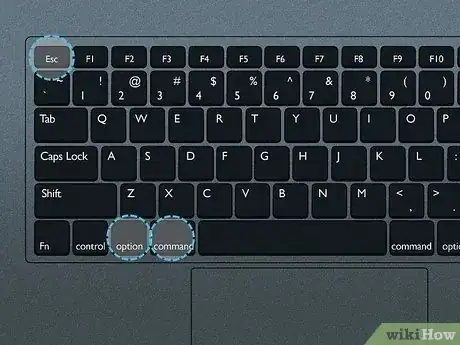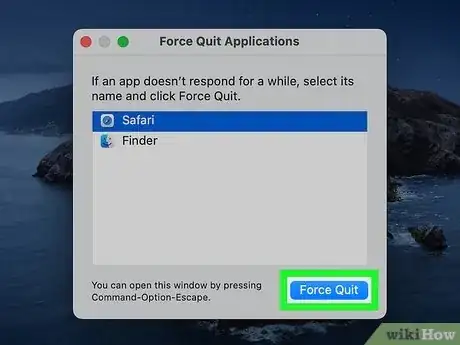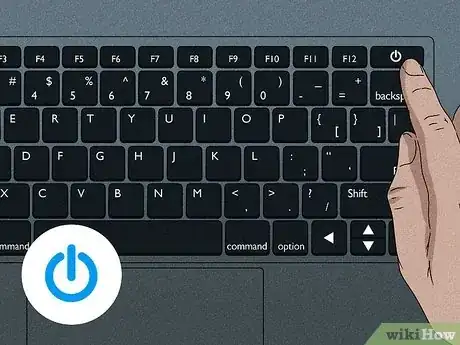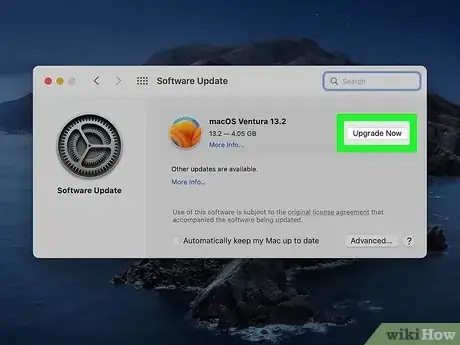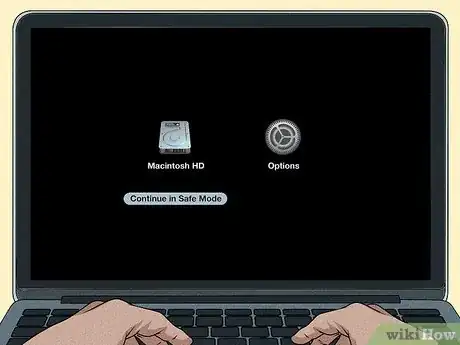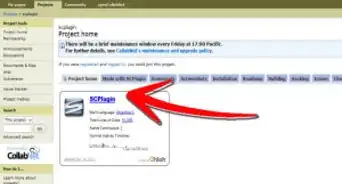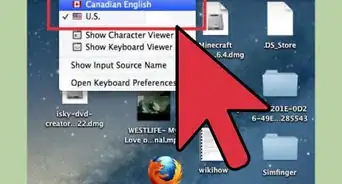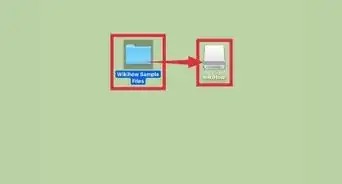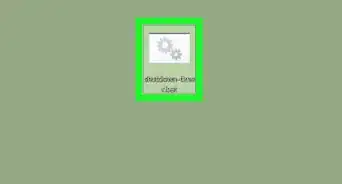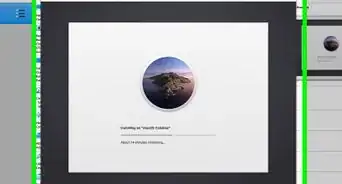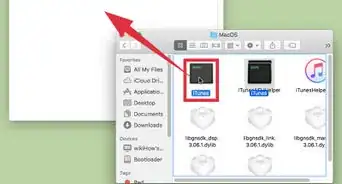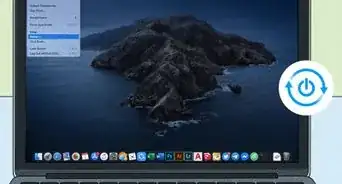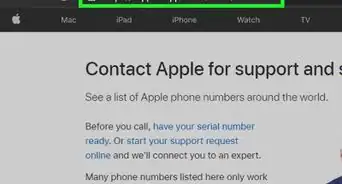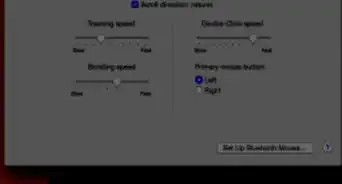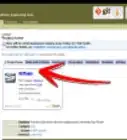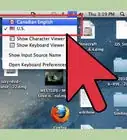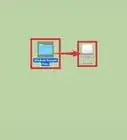This article was co-authored by Chiara Corsaro and by wikiHow staff writer, Rain Kengly. Chiara Corsaro is the General Manager and Apple Certified Mac & iOS Technician for macVolks, Inc., an Apple Authorized Service Provider located in the San Francisco Bay Area. macVolks, Inc. was founded in 1990, is accredited by the Better Business Bureau (BBB) with an A+ rating, and is part of the Apple Consultants Network (ACN).
This article has been viewed 484,214 times.
Is your Mac laptop or desktop computer frozen and unresponsive? Your Mac may be frozen due to a variety of issues, such as lack of memory or disk space. To get your Mac to respond again, force restart by holding the power button until the screen shuts off. When it turns on again, you may need to clear up space in your hard drive by uninstalling apps or programs and deleting files. This wikiHow will show you how to troubleshoot and fix a frozen Mac or MacBook.
Things You Should Know
- Force restart by holding the power button until the screen turns off. Wait a few minutes, then turn it on again.
- Press "Command" + "Esc" + "Options" to open the Force Quit Menu. Select a frozen app, then click "Force Quit".
- Uninstall unnecessary apps and use cloud storage to free up space if your hard drive is impacted.
Steps
Use Force Quit on Frozen Apps
-
1On your keyboard, press ⌘ Command+Esc+⌥ Option at the same time. The Force Quit menu should open.
- Use this method to force quit a frozen application on your Mac.
-
2Select the frozen application. You'll see a list of open applications.Advertisement
-
3Click Force Quit. This is the blue button at the bottom-right corner.
- The frozen app should close. You can now reopen the app.
Force Restart with Button
-
1Press and hold the power button. In most cases, the power button with be a circular or rectangular button with the power icon. Hold down until the screen turns off. This may take around 10 seconds.
- On MacBooks with a Touch Bar, use the button at the top-right of the keyboard, above the Delete key. The power button will be unmarked and black.
- On Mac Pros, the power button is located behind the screen in the bottom corner.
- On Mac Pro (Rack), the power button is the pill-shaped button on the front of the computer.
-
2Turn on your Mac. Press the same power button to turn it back on again.
- If this doesn't work, disconnect all your peripherals (keyboard, mouse, printer, etc), and force restart again.
Uninstall Unresponsive Apps
-
1Uninstall unresponsive apps. If you experience freezing regularly due to a specific app or program, force-quitting them is only a temporary solution. You'll need to uninstall the app or program.
-
2Reinstall apps (optional). If the app is needed, uninstalling and reinstalling could fix common issues.
- Open the App Store on your Mac, click your name in the bottom-left corner. Locate the app you want to install, then click the download icon.[1]
Free Up Disk Space
-
1Uninstall unnecessary apps. If your Mac is running slower than it used to, the problem could lie in your disk space. Uninstall apps that you haven't used in a while to increase your Mac's performance.
- You can check your disk space by clicking the Apple menu → About This Mac → Storage.
-
2Use iCloud to store files. iCloud is Apple's cloud-based storage platform. You can store files from your Mac in iCloud an access them from another iOS device. This will clear up lots of needed space.[2]
Expert Q&A
Did you know you can get expert answers for this article?
Unlock expert answers by supporting wikiHow
-
QuestionWhat if my Mac still isn't working after I force reboot it?
 Chiara CorsaroChiara Corsaro is the General Manager and Apple Certified Mac & iOS Technician for macVolks, Inc., an Apple Authorized Service Provider located in the San Francisco Bay Area. macVolks, Inc. was founded in 1990, is accredited by the Better Business Bureau (BBB) with an A+ rating, and is part of the Apple Consultants Network (ACN).
Chiara CorsaroChiara Corsaro is the General Manager and Apple Certified Mac & iOS Technician for macVolks, Inc., an Apple Authorized Service Provider located in the San Francisco Bay Area. macVolks, Inc. was founded in 1990, is accredited by the Better Business Bureau (BBB) with an A+ rating, and is part of the Apple Consultants Network (ACN).
Phone & Computer Repair Technician If at that point you're still experiencing freezing issues, I would say as a precaution, especially if you do not have a backup, to turn your computer off completely. Because when you do experience slow performance issues sometimes—not to say every time—but sometimes that can be an indication of a hardware failure, specifically the hard drive, or even possibly the memory.
If at that point you're still experiencing freezing issues, I would say as a precaution, especially if you do not have a backup, to turn your computer off completely. Because when you do experience slow performance issues sometimes—not to say every time—but sometimes that can be an indication of a hardware failure, specifically the hard drive, or even possibly the memory. -
QuestionWhat should I do if my Mac isn't responding?
 Community AnswerManually restart it using the ON/OFF button.
Community AnswerManually restart it using the ON/OFF button. -
QuestionWhat do I do if my Mac is freezing periodically?
 Community AnswerBack up your hard disk using Time Machine! These periodic freezes are warning that the system is deteriorating. Save everything before it does.
Community AnswerBack up your hard disk using Time Machine! These periodic freezes are warning that the system is deteriorating. Save everything before it does.
